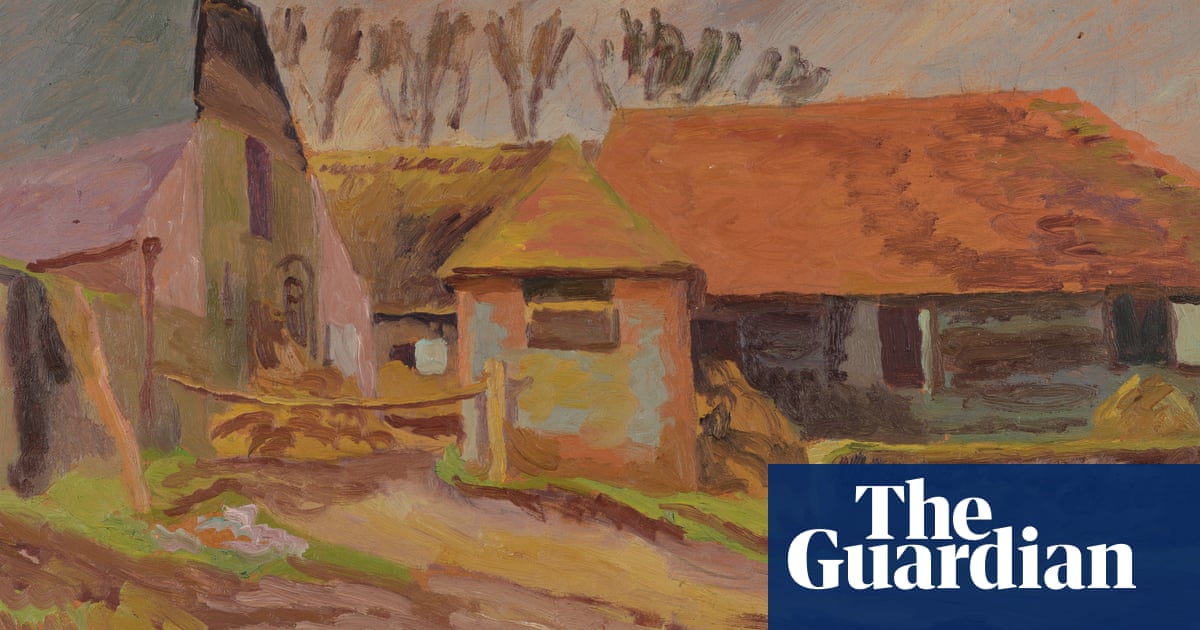
Charleston, the home and studio where the artists Vanessa Bell and Duncan Grant challenged convention to forge new models of creativity and ways of living, is launching a search for works by the Bloomsbury group held in private hands.
The radical group of artists and intellectuals, which also included the writers Virginia Woolf, Lytton Strachey and EM Forster and the economist John Maynard Keynes, worked and socialised at the 16th-century farmhouse in East Sussex – now a museum – as well as Bell’s London home.
The house has been preserved, along with furnishings, decor and everyday objects as well as art works. Over the next six years leading up to its 50th birthday, the charity that runs Charleston is attempting to track down 50 significant works created or owned by members of the group that are in private collections.
The “50 for 50” campaign will formally launch at the London Art Fair later this month, but Charleston has already secured 12 works including The Cloak, painted by Bell in 1912; a study of farm buildings by Grant; and a rare and newly conserved painting of London’s Mansion House by the French artist Simon Bussy that hung in the library at Charleston until Grant’s death in 1978.
“The [Charleston] collection is now the largest of works by Bell and Grant in the world, but there are gaps,” said Nathaniel Hepburn, director of Charleston. “We want to be able to tell the comprehensive story of the Bloomsbury group.”
Hepburn is appealing to owners of works to donate or bequeath them to Charleston, saying it was their “rightful home”.
He said: “We’re not expecting them all to arrive immediately. Most people will be wanting to hold on to their Bloomsbury treasures until they’re not around to enjoy them any more. So many will join our collections in the decades to come.”
Charleston is working with the Arts Council “acceptance in lieu” scheme, whereby people can donate works of art and other objects to the nation as a way of settling an inheritance tax bill.
“There’s a painting I saw just before Christmas that used to hang in Duncan Grant’s bedroom,” said Hepburn. “It’s currently in somebody’s library in north London. But there are also plenty of paintings that we don’t know where they are – there are extraordinary works still out there to be discovered.”
Bloomsbury works are occasionally sold publicly, but “they are highly sought after and well beyond the means of a small charity”, he added.
Many members of the group met at Cambridge. “They had money and privilege, but they rebelled against their Victorian forefathers. They imagined society differently and created revolutions in art and culture. A hundred years later, they are still inspiring people to think that society can be different, whether artistically, sexually, politically.”
Within the group, relationships were fluid. “They needed to be careful,” he said. “Homosexual acts were illegal, and they had to keep some aspects of their lifestyle secret even from their servants.”
They were conscientious objectors during the war, and they rebelled against societal norms – for example, specifying on dinner invitations “bring no clothes”, meaning there was no need to wear formal dress. “The conventions of Victorian life didn’t apply to them,” said Hepburn.












